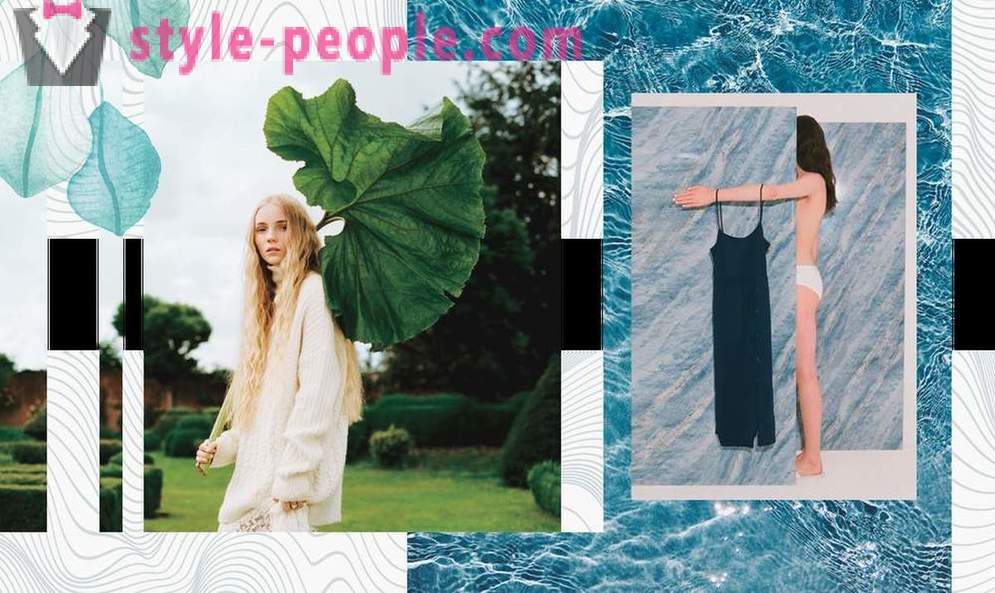4 myths that prevent you from dressing eco-friendly
The term "sustainable fashion", which translates as "sustainable fashion", has become one of the most important words of this year. It means that the fashion industry, the state and by the consumers it is time to reconsider the approach to the production and use of things, because only an integrated effort to help reduce the human impact on the environment.
Many brands, including giants such as Adidas, H & M (which last year released a collection of clothing from eco-friendly materials), Prada announced their initiatives to introduce more environmentally friendly approach to production. While most of these ideas are only the projects for the future, but we, the consumers do not have to wait until things are anywhere near the store will be environmentally friendly.
Global change starts with a change of thinking and way of life, and for this we all need to get rid of the misconceptions associated with a "green" approach to consumption. Heroine gathered popular myths that prevent you to take responsibility for their impact on the environment.
Myth 1: Why worry about fashion, it is unlikely to greatly affect on the environment

Just how much the fashion industry harms the environment, talking loudly and massively only in the last couple of years - and still all around us these messages is significantly less than clothes Advertising.
Back in the 2012 Natural Science magazine published an article in which he argued that dyeing and finishing of fabrics - the world's second source of fresh water after agriculture pollution. The demand for modern materials with synthetic fibers growing all the time - so the clothes do not fade, does not wear out very slowly decomposes. Taking into account that due to the effect of "fast fashion", many people no longer wear the thing is not due to the fact that it has become unusable, but simply because tired, a lot of clothes plohorazlagaemoy annually goes into landfills and incinerators.
too, it is not so simple with things made of natural fabrics. Cotton, which make up 40% of all clothing in the world, is considered the most safe for human material. However, when it is grown is consumed 24% of the world's supply of insecticides, pesticides and 11% of millions of liters of water. In addition, the fact that cotton, as well as any other raw material, became a textile, need about 8,000 synthetic funds, which then fall into the water bodies and contaminate them.
Fashion industry harms the ecology on all sides pollute the air, water, soil, accelerates global warming and poisoning the lives of the inhabitants of the planet. But people go each year to buy 60% of things more than 15 years ago, and without regret to part with clothes, which is just tired or has lost its urgency.
Myth 2: Find eco-friendly brands are very difficult to
Outset - there are not entirely environmentally friendly production of clothing. However, brands that are looking for ways to reduce the harmful impact on the environment, today quite a lot, and it becomes even more, including in Russia. NNEDRE create clothing from fabric remnants and bags products, recycled plastic and come out with various eco-friendly initiatives, Ozero produces swimwear from ekolaykry from recycled materials, it is necessary to open a search engine and you will find a dozen of such marks. To buy their clothes, you do not have to be a resident of the capital cities, or even leave the house.
Myth 3: Eco-friendly clothes - it's expensive

Creating an eco-friendly production in our country is still difficult and unprofitable, and therefore the price of things made from recycled materials are often higher than sales in the mass market. However, even for a person with an average income per shirt 8000 - not too expensive if these shirts need no more than two per year.
Eco-friendly approach to fashion - is not just to buy things made from recycled or natural materials. It is much more effective to rethink their approach to consumption and understand we really need to much smaller things than we buy. You do not need every month to surprise colleagues new outfit, look for a dress for each holiday, simply because the "old" (worn, a couple of times), you all have seen. Go to the same today - a sign not of poverty, but a conscious approach to consumption.
In addition, there are many other ways of environmentally friendly and inexpensive wardrobe update: exchange clothes swap, go to second-hand and buy already use things from other people through the Internet.
Myth 4: I can not influence on the fashion industry

In order to save the environment, individual effort is not enough: need legislative action by the state, changing ideologies productions themselves. However, this does not mean that you may not affect anything.
Buying clothes from brands that use eco-friendly approach in its production, you support them, helping to develop in difficult conditions - and this is exactly what you need local brands. When deciding to buy fewer things to take a qualitative, rather than a one-off clothes, and cares for it, you reduce the amount of waste that remains after you or your family. If this turns into a massive trend, the fashion industry can not simply ignore it.
Learn to read the labels on the clothes, to learn more about how it is produced, rather than blindly follow the labeling "eco" on the packaging, look for ways to get rid of unnecessary things with minimal harm to the environment - all these small, but important, steps will not help save the planet here and now, but it will gradually change the world, forcing global brands to give up the idea of "fast fashion".













































